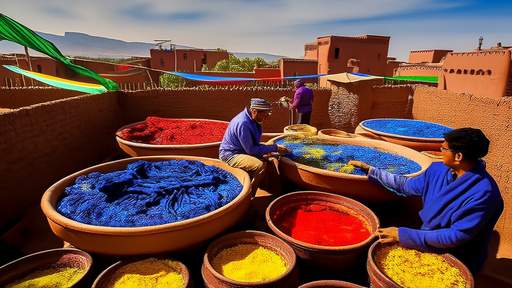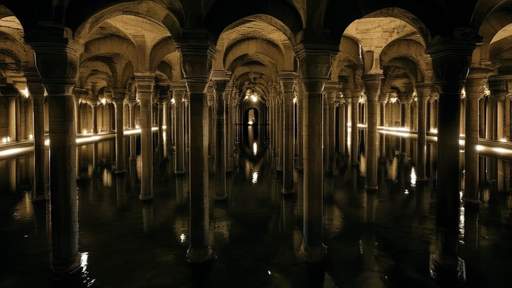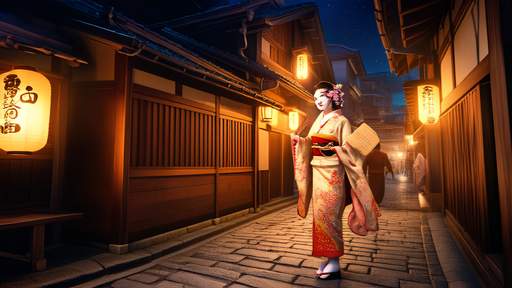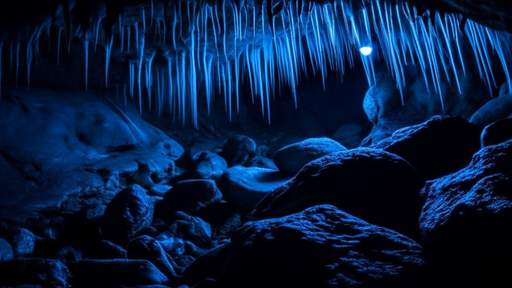The Basilica Cistern, or the Yerebatan Sarnıcı as it is known in Turkish, is one of Istanbul’s most mesmerizing historical treasures. Hidden beneath the bustling streets of the city, this ancient underground water reservoir dates back to the 6th century during the reign of Emperor Justinian I of the Byzantine Empire. Often referred to as the Sunken Palace, the cistern’s grandeur lies not just in its scale but in the eerie beauty of its dimly lit columns and the soft echoes of dripping water that fill its cavernous space.
Constructed to meet the water demands of Constantinople, the Basilica Cistern was part of a vast and sophisticated network of aqueducts, canals, and reservoirs that sustained the city through sieges and droughts. The cistern itself could hold up to 80,000 cubic meters of water, channeled from sources as far as the Belgrade Forest, nearly 19 kilometers away. Its roof is supported by 336 marble columns, each standing 9 meters tall, arranged in 12 rows of 28. Many of these columns were repurposed from older Roman structures, a common practice in Byzantine architecture, which adds to the cistern’s eclectic and mysterious aura.
Walking through the cistern today, visitors are struck by the interplay of light and shadow across the water’s surface, reflecting the intricate patterns of the columns. Two of these columns rest on carved pedestals depicting the head of Medusa, one placed upside down and the other sideways. The origins of these Medusa heads remain a subject of speculation—some believe they were placed deliberately to ward off evil spirits, while others suggest they were simply convenient recycled materials from an older Roman building. Whatever the reason, they contribute to the cistern’s enigmatic charm.
The Basilica Cistern was largely forgotten for centuries after the Ottoman conquest of Constantinople. It wasn’t until the mid-16th century that it was rediscovered by Petrus Gyllius, a Dutch traveler who noticed locals drawing water from holes in their basements. Even then, it wasn’t fully restored and opened to the public until 1987, after extensive cleaning and reinforcement. Today, it stands as a testament to Byzantine engineering prowess and a must-visit attraction for anyone exploring Istanbul.
Beyond its historical significance, the cistern has also captured the imagination of artists and writers. It has served as a backdrop for films, novels, and even music videos, its haunting atmosphere lending itself to tales of mystery and intrigue. The soft glow of the underwater lights, the occasional ripple of fish in the water, and the sheer scale of the space create an otherworldly experience that transports visitors back in time.
What makes the Basilica Cistern particularly fascinating is how it embodies the layered history of Istanbul itself. From its Roman spolia columns to its Byzantine construction and Ottoman-era neglect and rediscovery, the cistern is a microcosm of the city’s evolution. It’s a place where the past feels palpably close, where the ingenuity of ancient engineers meets the curiosity of modern explorers.
For those planning a visit, the cistern is located just southwest of the Hagia Sophia in the Sultanahmet district. The entrance is modest, giving little hint of the grandeur that lies below. Once inside, the temperature drops noticeably, and the sound of the city above fades away, replaced by the gentle lapping of water. Informational plaques and guided tours offer insights into the cistern’s history, though many visitors prefer to wander in silence, absorbing the atmosphere at their own pace.
In recent years, the cistern has undergone further renovations to improve accessibility and preservation. New walkways have been installed, and advanced lighting systems highlight its architectural details without compromising the ambiance. Special events, such as classical music concerts, are occasionally held within the cistern, taking full advantage of its natural acoustics and surreal setting.
The Basilica Cistern is more than just an ancient water storage facility—it’s a bridge between eras, a hidden gem beneath one of the world’s most vibrant cities. Whether you’re a history enthusiast, an architecture lover, or simply someone seeking a moment of quiet reflection, a visit to this underground marvel is an unforgettable experience. It reminds us that sometimes, the most extraordinary stories are found not in the grand palaces above ground, but in the silent, shadowy depths below.

By /Jun 5, 2025

By /Jun 5, 2025

By /Jun 5, 2025

By /Jun 5, 2025

By /Jun 5, 2025

By /Jun 5, 2025

By /Jun 5, 2025

By /Jun 5, 2025

By /Jun 5, 2025

By /Jun 5, 2025

By /Jun 5, 2025

By /Jun 5, 2025

By /Jun 5, 2025

By /Jun 5, 2025

By /Jun 5, 2025

By /Jun 5, 2025

By /Jun 5, 2025

By /Jun 5, 2025

By /Jun 5, 2025

By /Jun 5, 2025